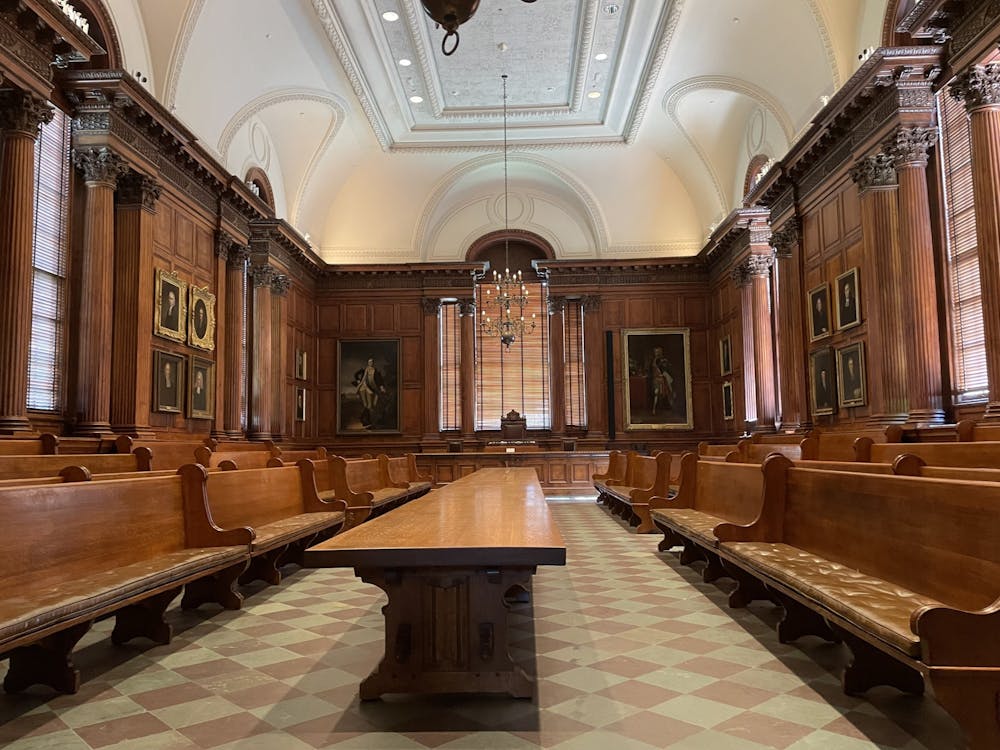Princeton University often promotes its commitment to a diverse student body with members hailing from varied backgrounds. But the same standard of diversity is not apparent in the demographics of Princeton’s faculty. To ensure varied teaching perspectives in Princeton classrooms, faculty diversity desperately needs to increase.
While Princeton’s student body is split across the middle for female and male students, the faculty population is predominantly male. According to the Office of Institutional Research’s Diversity Dashboards, last year 62 percent of non-tenured and tenured faculty were men. When looking only at tenured faculty, this disparity grows wider, with men composing 68 percent of that group. Therefore, not only are women less likely to be a faculty member in the first place, they are also underrepresented in tenure positions, which are considered the highest level of professorship.
Looking at the data set of the primary race of faculty members, we see that associate professors, full professors, and non-tenure track professors are all predominantly white. Assistant professors are 53 percent white, 21 percent Asian, eight percent Black, and seven percent Hispanic.
It is pertinent to note that the percentage of Black faculty at Princeton has risen by only one percent — from four to five percent — in 10 years. Currently, Black students make up 10 percent of the undergraduate student body, so the fact that the percentage of Black faculty remains so low indicates that Princeton must create new policies to recruit more Black faculty members.
A faculty that is predominantly white and male does not meet the needs of an increasingly diverse Princeton student body that hails from countries across the world from varied cultures, socioeconomic statuses, races, and genders. Princeton’s representation of Black, Hispanic, and Native populations among students is already lower than their national representation, which only makes their low representation among the faculty all the more disappointing and unacceptable.
Princeton is certainly not the only institution struggling with faculty diversity; many other colleges and universities across the country are as well. As of 2021, about 60 percent of Harvard’s tenured faculty are white men. Yale’s faculty was 62 percent white last year. The fact that Princeton is not alone in needing a more diverse faculty does not mean the University can be complacent about the issue, especially given that Princeton has prided itself on being a leader amongst its peers and being one of the first universities to enact changes to make campus more inclusive and diverse. Therefore, Princeton needs to take more forceful steps towards diversifying its faculty members.

In this column I have only looked at gender and race as factors of diversity, but there are undoubtedly many other attributes that constitute factors of diversity, such as religion, disability, and socioeconomic class. Without a sufficiently diverse faculty, Princeton students are being deprived of opportunities to learn from those with unique and invaluable experiences and perspectives. It is my hope that in the future academic years, Princeton takes strides to greater diversify its faculty, thereby improving students’ academic experience.

So what steps should Princeton take? To hire and attract more women faculty and faculty of color, Princeton needs to minimize unconscious bias in the faculty search process as much as possible. Therefore hiring committees must be adequately trained on being aware of inherent biases and how to reduce biases’ influence when making decisions on who will join the Princeton faculty.
Additionally, retention of new faculty is just as important as recruitment. Nationally, faculty of color and female faculty are often paid less than their white male counterparts, so equity in pay needs to be prioritized as well as pay transparency across individual departments. The culture of inclusion and acceptance with their peers once faculty members arrive on campus is critical to retaining them and not losing them to other institutions.
University President Eisgruber ’83 said that the next edition of the annual Diversity, Equity, and Inclusion report, which would be the second one ever published by Princeton, will showcase greater diversity amongst faculty.
I, for one, eagerly await this next report to see how Eisgruber and the University make good on this promise.
Ndeye Thioubou is a first-year from The Bronx, N.Y. She can be reached at nthioubou@princeton.edu.








